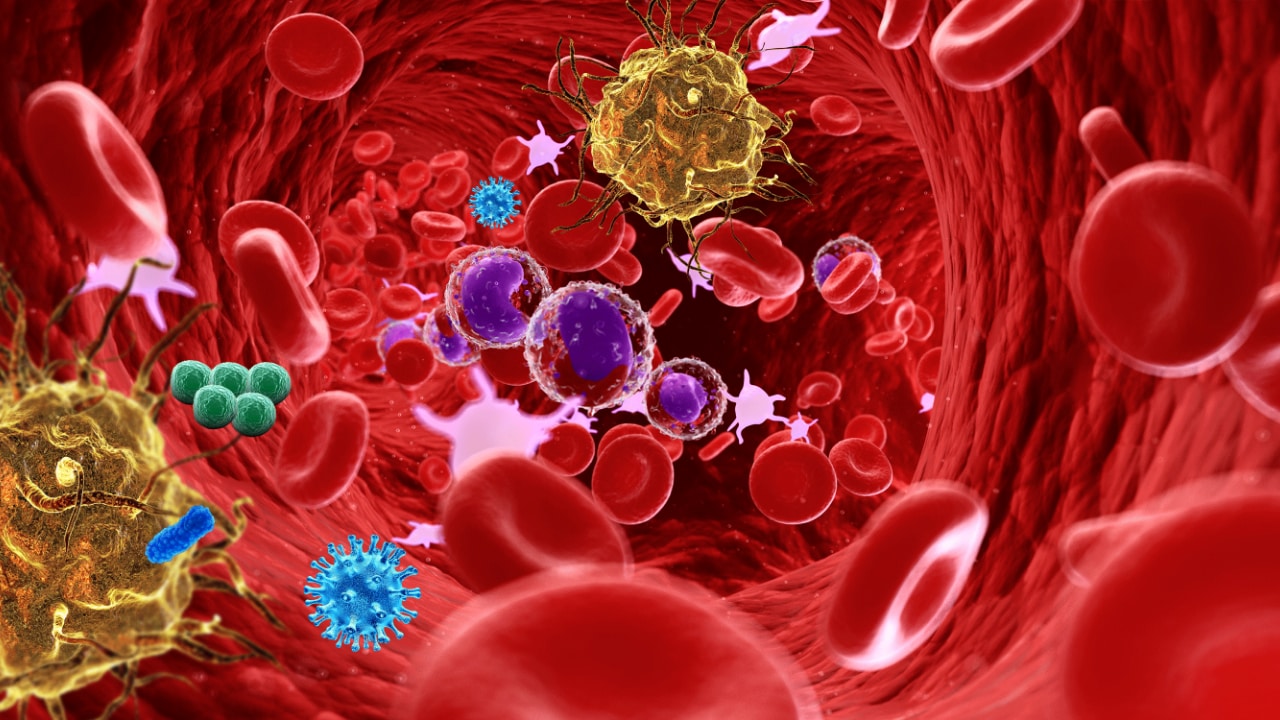Practice Essentials
Septic arthritis results from the presence of microbial agents in a joint space. Septic arthritis of the hip is a true orthopedic emergency; delay in diagnosis or treatment may result in irreversible damage to the joint. In recent decades, the relative frequency with which specific microbial agents have been causing infection has dramatically decreased, resulting in a decline in the overall incidence of septic arthritis and a modification in the presumptive medical therapy.
Septic arthritis is a challenging clinical problem because (1) signs and symptoms may be subtle and overlap with those found in other conditions, (2) screening laboratory studies and synovial fluid cultures are relatively insensitive, and (3) optimal management, including duration of antibiotics and surgical approach, is not evidence based. See the image below.
 Emergency room photograph of an infant with septic arthritis of the left hip. The child holds his hip rigidly in the classic position of flexion, abduction, and external rotation, a position that maximizes capsular volume. The patient is relatively comfortable as long as the hip joint remains immobile in this position.
Emergency room photograph of an infant with septic arthritis of the left hip. The child holds his hip rigidly in the classic position of flexion, abduction, and external rotation, a position that maximizes capsular volume. The patient is relatively comfortable as long as the hip joint remains immobile in this position.
Signs and symptoms
The most common physical signs of septic arthritis are the following:
-
Decreased or absent range of motion
-
Joint tenderness
-
Swelling
-
Warmth
-
Erythema
Children typically have involvement of a single joint; neonates are more likely to have infection in multiple joints.
See Presentation for more detail.
Diagnosis
Laboratory studies
When septic arthritis is suspected, synovial fluid should be obtained for a complete blood cell (CBC) count, glucose level, Gram staining, and culture.
Imaging studies
Ultrasonography is a simple and relatively inexpensive technique for detecting a hip effusion. This test has a greater sensitivity than plain radiography and is becoming the modality of choice to reveal hip effusions.
See Workup for more detail.
Management
Hospitalize all children presumed to have septic arthritis for empiric intravenous antibiotic therapy. Once an organism is identified, an appropriate antibiotic is selected, and the child is demonstrating a good clinical response, continue outpatient therapy with either high-dose oral antibiotics or parenteral antibiotics.
Splint the affected joint in a functional position for the first few days after the diagnosis of septic arthritis is made. Encourage early passive range of motion to stretch tendons and prevent contractures.
Traditionally, for uncomplicated septic arthritis involving joints other than the hip or shoulder, serial needle aspirations are performed. Urgent arthrotomy and open drainage is usually performed in septic arthritis of the hip or shoulder, septic arthritis of other joints if no improvement occurs within 3 days of starting antimicrobial therapy, or if a large amount of pus or debris is aspirated during diagnostic arthrocentesis.
See Treatment and Medication for more detail.
Patient education
Nontraumatic joint pain with evidence of arthritis, such as swelling, warmth, or redness, requires emergency medical attention. For patient education information, see the Arthritis Center.
Etiology
The most common route by which microorganisms enter a joint is by hematogenous spread to the synovium. Less commonly, entry occurs directly following a penetrating trauma or contiguously from an adjacent osteomyelitis. Because of their unique anatomy, neonates and young children often have coexisting septic arthritis and osteomyelitis. The bony cortex is thin, and the periosteum is loose. Blood vessels that connect the metaphysis and epiphysis serve as a conduit by which bony infection may easily reach the joint space.
Proteolytic enzymes released by inflammatory cells can damage joint cartilage. In addition, inflammatory mediators, bacteria, and pus increase pressure within the joint, compress intra-articular vessels, and impair blood supply to the cartilage and adjacent bone. Pressure necrosis within any joint may destroy synovium or cartilage, but septic arthritis of the hip is a true orthopedic emergency. In the hip, if the condition remains undiagnosed and untreated, contiguous spread may cause ligamentous damage, avascular necrosis of the femoral head, dislocation, and osteomyelitis.
Infectious agents
In neonates (aged < 2 mo), Staphylococcus aureus is the most common cause of septic arthritis (SA), but Escherichia coli, group B streptococci, and other gram-negative bacilli also cause the disease.
In children aged 2 months to 5 years, Haemophilus influenzae type B was the most common cause of SA prior to the widespread use of vaccines; S aureus is now the most common cause. In a series of 61 children diagnosed with a known pathogen from 1975-1985, H influenzae type B caused the infection in about half of the children. [1] In contrast, among 46 children diagnosed with septic arthritis from 2000-2006, S aureus was the cause in 31 (67%). [2] Other etiologies include group A streptococci and Streptococcus pneumoniae. Community-acquired methicillin-resistant S aureus (MRSA-CA) is an increasingly common cause of SA in children.
In adolescents, Neisseria gonorrhoeae is the suspected cause for patients with either polyarticular or monoarticular disease. Group A streptococcus is reported in numerous children with active varicella-zoster infection. Salmonella is suspected in individuals with sickle cell anemia. Salmonella typhi has also been reported as a cause of septic hip arthritis in immunocompetent infants and children. [3]
Mycobacterium tuberculosis is a rare cause of chronic pyogenic arthritis. If identifiable risk factors are present, then a purified protein derivative (PPD) should be placed for the child with culture-negative disease. Kingella kingae has been noted to cause SA in children younger than 5 years in Israel and is an emerging pathogen in the United States. Rarely, fungi or anaerobes may be found within a septic joint.
A common cause of reactive arthritis is the spirochete Borrelia burgdorferi. Children typically present with a monoarthritis, in the absence of fever, weeks to months after being bitten by a tick. Less common causes of reactive arthritis include mycoplasma and viruses.
Epidemiology
Occurrence in the United States
Septic arthritis (SA) is more common in children than adults, but the actual incidence is unknown. From 1979-1996, a tertiary-care children's hospital reported just 82 children with either confirmed or suspected SA of the hip. [4] From 2000-20004, 34 such cases were diagnosed at a separate tertiary-care children's hospital. [5] Data from older studies are somewhat obsolete, because effective vaccines have virtually eliminated the most common etiologic agent, Haemophilus influenzae type B.
With the dramatic increase in MRSA-CA, the clinical impression of pediatricians and pediatric emergency medicine physicians is that a corresponding increase in the incidence of SA has been observed. [6] However, large, population-based studies to prove this trend are lacking. In fact, a study by Okubo et al reviewed the US hospital discharge records of pediatric septic arthritis patients for 2006, 2009 and 2012 and reported a decreasing trend in incidence (4.23, 3.64, and 3.28 per 100,000 children in 2006, 2009, and 2012, respectively). The study also reported a higher hospitalization rate in children who were male and between 0-4 years of age and living in lower-income areas. The most frequently affected sites of infection were in the large joints at the lower limbs and these infections and the age category of 10-14 years of age were associated with osteomyelitis and bacteremia/septicemia comorbidities. [7]
Subgroups of children who are at high risk for SA include neonates, individuals with hemophilia who are subject to hemarthrosis, and individuals who are immunocompromised, such as those with sickle cell anemia or human immunodeficiency virus (HIV) infection or those treated with chemotherapy.
A study by Okubo et al reviewed the US hospital discharge records of pediatric septic arthritis patients for 2006, 2009 and 2012 and reported a decreasing trend in incidence (4.23, 3.64, and 3.28 per 100,000 children in 2006, 2009, and 2012, respectively). The study also reported a higher hospitalization rate in children who were male and between 0-4 years of age and living in lower-income areas. The most frequently affected sites of infection were in the large joints at the lower limbs and these infections and the age category of 10-14 years of age were associated with osteomyelitis and bacteremia/septicemia comorbidities. [7]
A study by Patankar et al found no clear seasonal variation in the incidence of septic arthritis in children in the United States, except in northeastern states. In the Northeast, a higher percentage of cases occurred in the fall and summer (28%) than in the winter (21%). [8]
Sex- and age-related demographics
A higher incidence of SA is reported among boys than girls; some series report that boys are affected twice as frequently as are girls. However, a series of 82 children with SA of the hip found no sex predilection. [4]
SA occurs among all age groups but is most common in younger children, peaking in those younger than age 3 years.
Prognosis
Time to diagnosis is the most important prognostic factor in septic arthritis (SA). Early institution of therapy helps to prevent degenerative arthritis. Diagnosis may be delayed in young infants, which leads to a poorer outcome.
Other poor prognostic factors include infection of the hip joint, which may lead to aseptic necrosis of the femoral head; infection with S aureus; and a prolonged passage of time before the synovial fluid is sterilized.
Meningitis (10-30%), osteomyelitis (5-10%), cellulitis (10-30%), and pneumonia (5%) are potential complications in young children with septic arthritis resulting from hematogenous spread of H influenzae type B. Osteonecrosis, growth arrest, and sepsis are potential complications from SA of any etiology.
Because of the availability of antibiotics, children rarely die from septic arthritis or its complications. Although chronic arthritis is uncommon, the short-term morbidity and costs, in terms of prolonged antibiotic therapy and hospitalizations, may be substantial.
-
Emergency room photograph of an infant with septic arthritis of the left hip. The child holds his hip rigidly in the classic position of flexion, abduction, and external rotation, a position that maximizes capsular volume. The patient is relatively comfortable as long as the hip joint remains immobile in this position.









